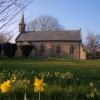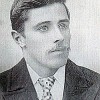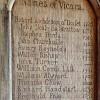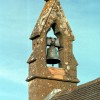William Cox was born in Wimborne in 1764 and was educated at Queen Elizabeth Grammar School. He joined the army and quickly rose to Paymaster and at Cork he served against Irish rebels, many of whom were captured and ordered to be transported to Australia. He joined the New South Wales Corp and sailed on a convict ship to Botany Bay.
In Australia he acquired farming land and later became active in the construction of a major highway and several building projects. A natural leader of men he appears to have been well liked and a master at managing human resources, getting the best out of people whether they be his superiors, his workforce or convicts. Like a lot of successful people throughout history his financial affairs drifted into muddy waters but with these issues behind him he went on to become one of Australia’s pioneers.
After leaving school William’s father, Robert Cox, moved his family to Devises in Wiltshire and William married Rebecca UpJohn, the daughter of a Bristol merchant, with whom he had six sons and a daughter. The daughter does not seem to have survived. He was a member of the Wiltshire Militia and joined the army in July 1795 receiving a commission as ensign in 117th Foot. In February of 1797 he became a lieutenant 68th Foot and in September the following year he was appointed Paymaster and ordered to Cork where he served against Irish rebels.
At Cork, Cox joined The New South Wales Corp and was given the same rank of Paymaster. The Corp left from Cork on the 24th of August 1799 for Port Jackson (Sydney) on board the Minerva which, after twice escaping raids from Spanish pirates and Spanish galleons, arrived in Sydney on 11th January 1800. On board the ‘Minerva’ were some 160 convicts including General Holt and the Revd. H. Fulton and Cox, recognising that the majority were political prisoners rather than criminals, made sure all were treated well and often allowed up on deck to get fresh air. It was this generosity of spirit that earned him the respect of all those under his rule.
On his arrival in Australia he immediately saw the opportunities and bought a farm of 100 acres and had General Holt, who was still officially a prisoner, manage it for him. Over time more acreage was added.
With William were his wife, Rebecca, and their four younger sons. The older boys remained in England to finish their education and didn’t join the family in Australia until 1804. James stayed in Australia but William returned to England with his father in 1807 when his father was facing financial ruin and disgrace.
In 1803 his estate was placed in the hands of trustees even though he had substantial sums of money owing to him and he believed the value of his assets far exceeded his liabilities. He was suspended from office. In 1807 he was ordered to return to England to account for financial irregularities in his accounts while he was Paymaster. There are differing accounts of the outcome of these enquiries: on the one hand we are given to believe he was discharged the service and another account says he cleared himself; as a result was promoted to Captain in 1808. The later account seems more likely because back in Australia in 1811 he was the principal magistrate at Hawkesbury, New South Wales.
On July 14th 1814 Cox received a letter from the Governor accepting his offer to superintend the building of a road from a ford on the river Nepean on the Emu Plains across the Blue Mountains to a point on the Bathhurst Plains, a distance of about 100 miles.
He was given 30 labourers and a guard of 8 soldiers. The task took six-months to complete from starting work in July 1814 to completion in January 1815: this was an amazing achievement and in April the Governor drove his carriage down it from Sydney to Bathurst.The road opened up the opportunity to settle the land beyond the mountains and this began almost at once.
Cox, now a prosperous man, established a farm near the junction of the Cugegong and Macquarie rivers. Following the death in 1819 of his first wife Rebecca, William Cox married Anna Blackford with whom he had a further three sons: Edgar, Thomas and Alfred and a daughter, between 1822 and 1825.
William junior did not return to Australia with his father but stayed in Europe, served in the Peninsular War and did not return to stay permanently in Australia until 1814 when he was 24 and married. The other four sons born in England were significantly younger: the third son, Charles, died, unmarried, on missionary work in Fiji when he was only eighteen. And the sixth son, Frederick, died young. That left George and Henry, who were only about three or four when they left England and their Australian-born brother Edward, born at Hawkesbury in 1805.
William Cox died at Windsor, New South Wales on 15th of March 1837. In St. Andrew’s Cathedral in Sydney there is a window in his memory. “This window is the gift of George Cox of Wimborne and Edward Cox of Fernhill, Mulgoa, in memory of their father William Cox, of Clarendon, Richmond, N.S.W. Arrived in Port Jackson in the Minerva 10th January 1800 in command of a detachment of the New South Wales Corp, of which he was an officer.” These days the house at Clarendon is in the care of the National Trust of Australia.
General Holt, who had worked for Cox, described him as “a man of great kindliness and fine character.” Only a man of real ability and a genius for managing men could have built a road across the mountains in so short a time, and it would be difficult to find an equal feat during the early history of Australia.



